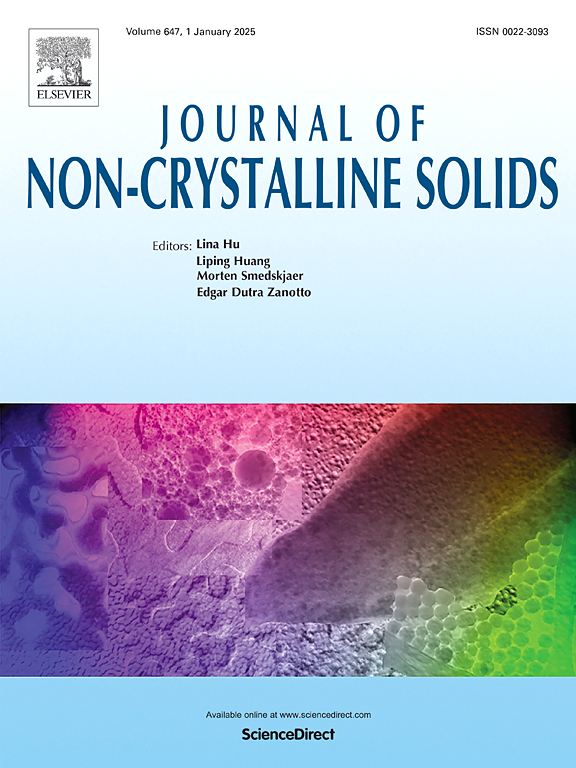Solid-liquid equilibrium and glass transition temperatures of tetraethylene glycol – water mixtures in bulk and confined mesoporous silica
IF 3.2
3区 材料科学
Q1 MATERIALS SCIENCE, CERAMICS
引用次数: 0
Abstract
The effect of confinement on the melting and glass transition (Tg) temperatures of tetraethylene glycol (TREG) aqueous solutions was studied in bulk and confined in mesoporous silica over a range of TREG weight fractions (wTREG) from 0.30 to 0.99.
For bulk solutions Tg shows a constant value for wTREG = 0.90–0.99, which was explained considering that the addition of water to the polyol increases the size of the α relaxing entities. For wTREG = 0.50–0.90, Tg decreases with increasing water content due to the plasticizer effect of water. In contrast, for wTREG = 0.30–0.40, Tg values increase, reaching a constant value independent of the water content. This is explained by the fact that, in these dilute systems, water can crystallize during cooling the samples before the heating scan. Hence, the glassy phase attains the composition of the maximally freeze concentrated solution.
The behavior of Tg with composition for samples confined in pores with diameters ranging from 8 to 58 nm is similar to that observed in bulk. However, in pores with 2 nm diameter, Tg exhibits a different behavior. Tg decreases with water content in the composition range wTREG = 0.90–0.99, indicating that the size of the α relaxing entities should be between 2 and 8 nm. For wTREG = 0.30–0.40, Tg also attains a constant value indicating that water also crystallizes in 2 nm pore samples when cooling them before the heating scans.

求助全文
约1分钟内获得全文
求助全文
来源期刊

Journal of Non-crystalline Solids
工程技术-材料科学:硅酸盐
CiteScore
6.50
自引率
11.40%
发文量
576
审稿时长
35 days
期刊介绍:
The Journal of Non-Crystalline Solids publishes review articles, research papers, and Letters to the Editor on amorphous and glassy materials, including inorganic, organic, polymeric, hybrid and metallic systems. Papers on partially glassy materials, such as glass-ceramics and glass-matrix composites, and papers involving the liquid state are also included in so far as the properties of the liquid are relevant for the formation of the solid.
In all cases the papers must demonstrate both novelty and importance to the field, by way of significant advances in understanding or application of non-crystalline solids; in the case of Letters, a compelling case must also be made for expedited handling.
 求助内容:
求助内容: 应助结果提醒方式:
应助结果提醒方式:


